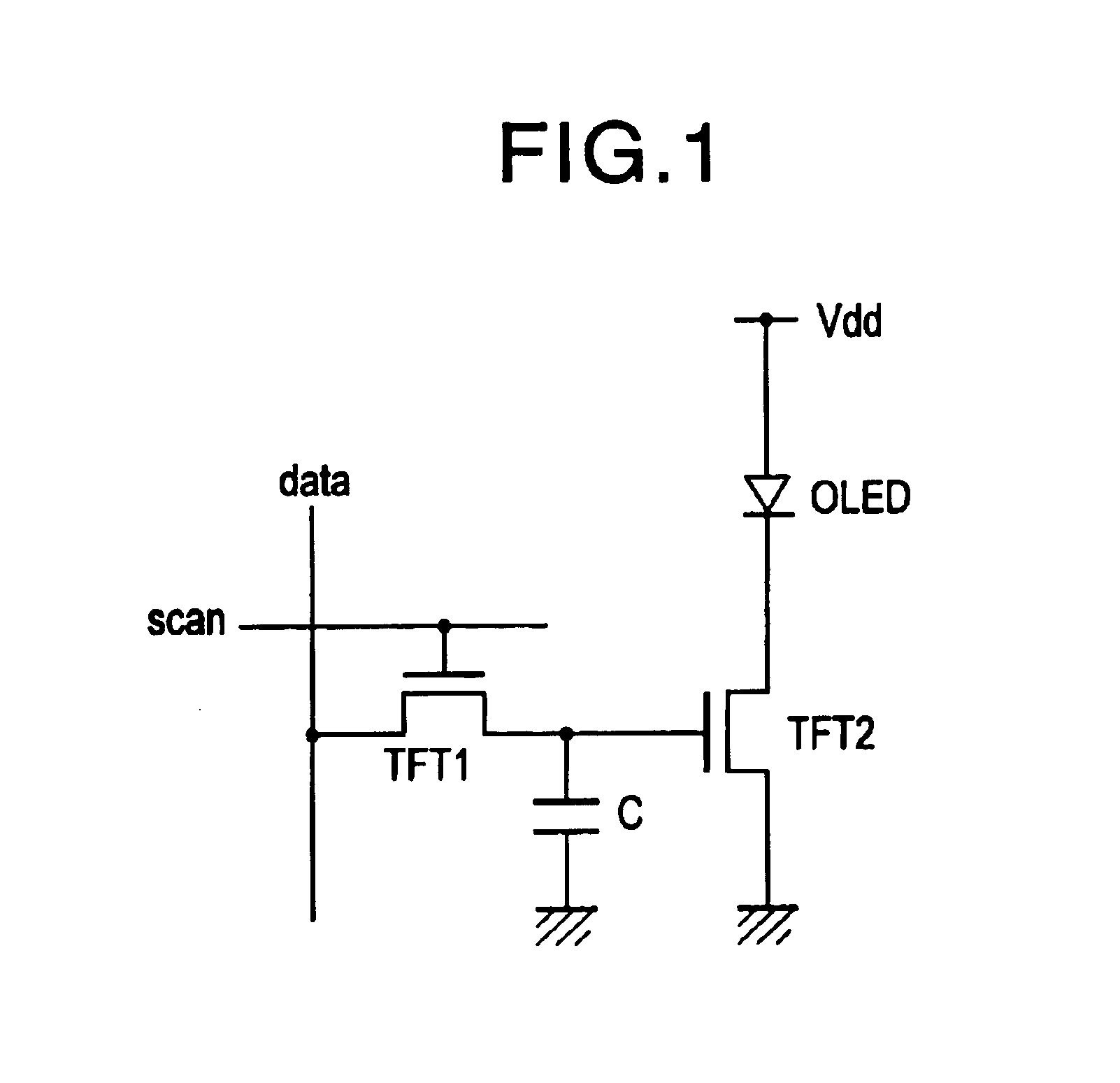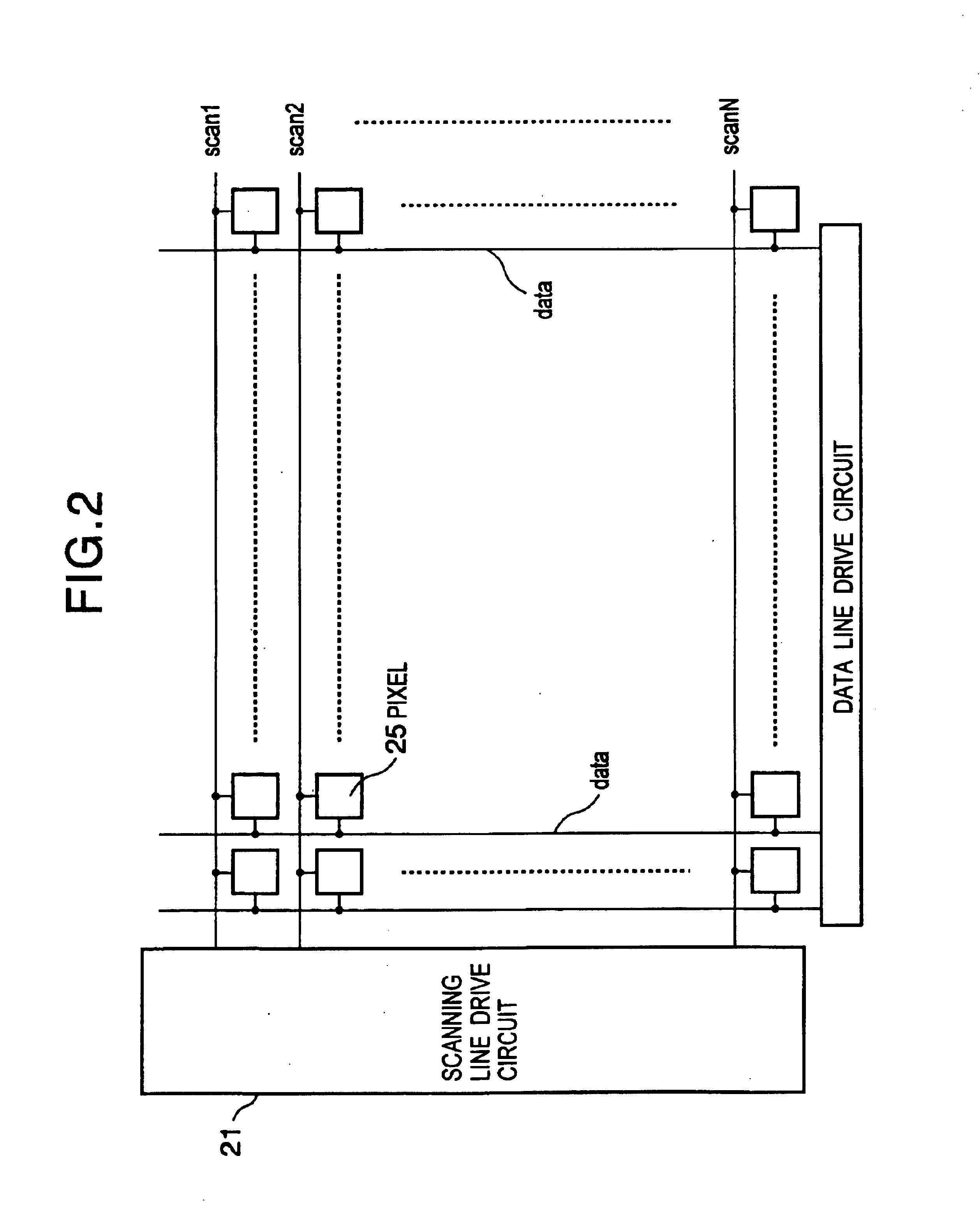Current drive circuit and display device using the same, pixel circuit, and drive method
a drive circuit and display device technology, applied in semiconductor devices, instruments, computing, etc., can solve the problems of difficult to realize a large sized, difficult inability to use a single crystalline silicon substrate for the formation of active elements, etc., to achieve convenient and free brightness adjustment of display devices, the effect of increasing the drive current of light emitting elements
- Summary
- Abstract
- Description
- Claims
- Application Information
AI Technical Summary
Benefits of technology
Problems solved by technology
Method used
Image
Examples
Embodiment Construction
Below, embodiments of the present invention will be explained by referring to the attached drawings.
FIG. 5 shows an example of a pixel circuit according to the present invention. This circuit comprises, other than the conversion use transistor TFT1 with the signal current flowing therethrough and the drive use transistor TFT2 for controlling the drive current flowing through a light emitting element made of an organic EL element or the like, a fetch use transistor TFT3 for connecting or disconnecting the pixel circuit and the data line DATA by the control of a first scanning line SCAN-A, a switch use transistor TFT4 for short-circuiting the gate and the drain of the TFT1 during the writing period by the control of a second scanning line SCAN-B, a capacitor C for holding the voltage between the gate and source of the TFT1 even after the end of the writing, and the light emitting element OLED. In FIG. 5, TFT3 is configured by a PMOS, and the other transistors are configured by NMOSs, ...
PUM
 Login to View More
Login to View More Abstract
Description
Claims
Application Information
 Login to View More
Login to View More - R&D
- Intellectual Property
- Life Sciences
- Materials
- Tech Scout
- Unparalleled Data Quality
- Higher Quality Content
- 60% Fewer Hallucinations
Browse by: Latest US Patents, China's latest patents, Technical Efficacy Thesaurus, Application Domain, Technology Topic, Popular Technical Reports.
© 2025 PatSnap. All rights reserved.Legal|Privacy policy|Modern Slavery Act Transparency Statement|Sitemap|About US| Contact US: help@patsnap.com



